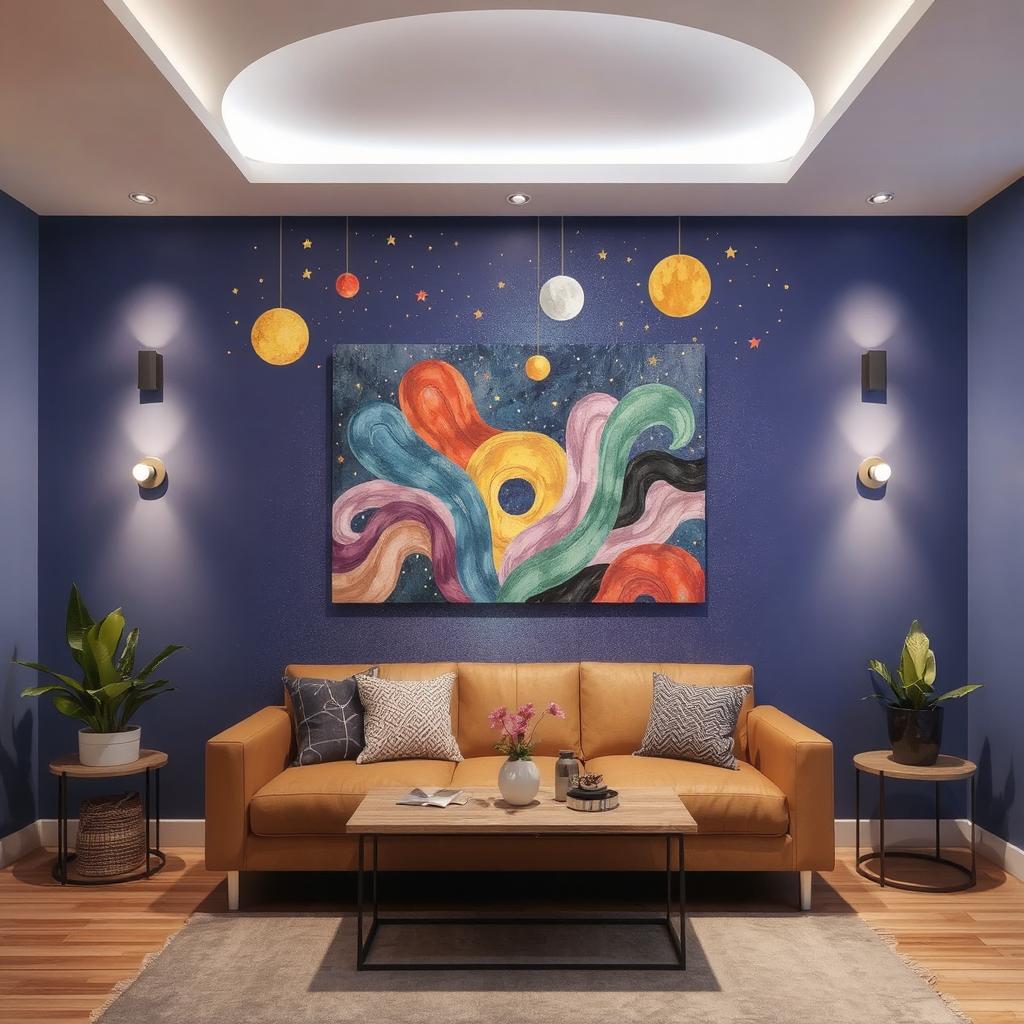The Ultimate Guide to Art Wall Design: Elevate Your Space with Creativity

An art wall is more than just a decorative element; it’s a personal statement, a reflection of your style, and an artistic focal point that can transform any room. Whether you’re a seasoned interior designer or a homeowner looking to refresh your space, creating an art wall is a rewarding way to enhance the aesthetics of your home. In this guide, we’ll explore how to design an art wall that captivates, inspires, and leaves a lasting impression.
Why Create an Art Wall?
Art walls are not just for galleries or museums; they bring personality and sophistication to any living space. Here are some compelling reasons to consider designing an art wall:
- Personal Expression: Showcase your favorite pieces, from paintings and photographs to sculptures and textiles, to reflect your unique taste.
- Aesthetic Appeal: A thoughtfully curated art wall adds visual interest and serves as a conversation starter.
- Space Transformation: Even the simplest room can feel more dynamic and complete with the right art arrangement.
- Flexibility: Art walls can be updated and rearranged to keep your space fresh and relevant.

Key Considerations for Art Wall Design
Before you start hanging artwork, it’s essential to plan thoughtfully. Here are some key factors to consider:
1. Choose the Right Wall
Select a visible wall with enough space to accommodate your art. Popular choices include walls in living rooms, hallways, bedrooms, or home offices.
2. Define a Theme
Decide on a cohesive theme or style to tie your pieces together. This could be based on color schemes, artistic styles (modern, abstract, vintage), or subject matter (landscapes, portraits, or typography).
3. Plan Your Layout
Experiment with different layouts before committing. Common layouts include:
- Grid Style: Symmetrical and organized, perfect for identical frames or sizes.
- Salon Style: Eclectic and varied, mixing different shapes, sizes, and frames.
- Linear Style: Simple rows or columns for a clean, modern look.
4. Use the Right Tools
Invest in quality hanging tools to ensure your artwork stays secure. Options include:
- Picture hanging hooks
- Adhesive strips for lightweight pieces
- Gallery rails for flexible arrangements
5. Lighting Matters
Proper lighting enhances the visual impact of your art wall. Consider installing accent lighting like spotlights, wall sconces, or LED strips.
Steps to Create the Perfect Art Wall
Step 1: Gather Your Artwork
Collect pieces that resonate with you. This could include:
- Framed photos of cherished memories
- Paintings or prints by your favorite artists
- DIY art or creations by family members
- Sculptures, wall hangings, or mixed media pieces
Step 2: Plan Your Arrangement
Lay out your artwork on the floor or use digital tools to visualize the arrangement. Aim for balance and harmony, ensuring no single piece overwhelms the composition.
Step 3: Prep the Wall
Clean and measure your wall. Mark the placement of each piece lightly with a pencil or painter’s tape.
Step 4: Start Hanging
Begin with the largest or central piece and build outward. Maintain consistent spacing between frames for a polished look.
Step 5: Step Back and Adjust
Once everything is up, take a step back and assess the overall effect. Make adjustments as needed to achieve your desired look.
Creative Art Wall Ideas
- Gallery Wall: Combine photos, paintings, and objects in an eclectic arrangement.
- Minimalist Display: Stick to a monochromatic palette and simple frames for a sleek, modern vibe.
- Themed Collections: Focus on a single theme, such as travel photos or botanical prints.
- Mix and Match: Pair traditional framed art with unconventional items like mirrors, shelves, or plants.
- Rotating Gallery: Use picture ledges to swap out artwork and keep your display dynamic easily.
Art Wall Design Tips for Small Spaces
- Opt for a single statement piece instead of multiple smaller ones.
- Use mirrors to create an illusion of space.
- Stick to lighter colors and minimalist frames to avoid overwhelming the room.

